Feral Horses of the Prairie - Western United States
 |
Onaqui Mountains HMA, Utah
| The
Onaqui HMA contains 43,880 acres of Federal, State, and privately owned
land.The
vegetation on the upper elevations of the Onaqui Mountains is comprised
of mountain brush and scattered stands of conifers. The foothill area
is vegetated by stands of juniper trees. Areas that have burned or have
been mechanically revegetated contain bunch grass. The valley areas are
comprised of sagebrush and annual cheatgrass. The
wild horses tend to stay on the bench and flat areas along the east and
west sides of the mountain range. Wild
horses have occupied the Onaqui
Mountains since the late 1800s. Most of the horses are descendants of
horses that escaped from local ranches.
The
dominant colors within the herd area are brown and bay. Other colors
found include sorrel, roan, buckskin, black, palomino, and gray.
The
wild horses on the Onaquis are classified as average in size. Mares
average around 900 pounds and the stallions, around 1,000.
The horses are good to average in composition and generally remain
healthy even during periods of drought.
The BLM management goal for this herd is to maintain a herd size
between 70 and 120 head. |
| In
Sept 2005, Steve
Dick and I went to this Utah HMA in hopes of observing
wild horses in a biome different from the horses in the
areas of the Great Basin region of the American West. Once again, our
purpose
was to take a look at the wild horses living there and observe
differences, if any, in the feet produced in the foothills of the Rocky
Mountains - grasslands (prairie) - from the high desert
biomes that produced the feral hoof specimens most commonly viewed. So
we decided to trek on out and see for ourselves. We were fortunate to observe approximately 85 of the estimasted 100 horses in this particular HMA. This was due in large part to the scarcity of watering holes in the valley we explored. Many of the horses stayed within easy access of this water source and it was a relatively simple matter to stake out the location and wait for them to come in to drink. The pictures below are from our still cameras, many more will be pulled from the hours of video we shot during our trek as soon as we can get to it. Enjoy! Copyrite Notice: All images on this page are the property of of Cindy Sullivan and Steve Dick. They may be reproduced for educational purposes only with appropriate credits given. They may not be reproduced for commercial purposes. |
| The Environment of Onaqui |
||
Prairie Valley View This breathtaking view greated us
as we settled in at our campsite the day we arrived. This is the
home of the prairie horses we were so anxious to meet.
|
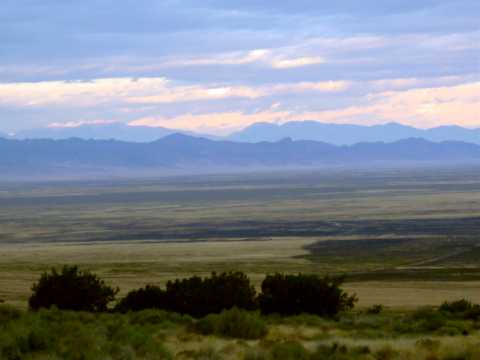 |
|
Main access road into the HMA...a typical gravel road, well maintained., providing easy access in and out of the HMA. |
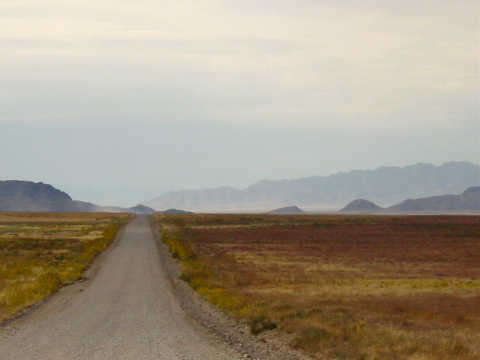 |
|
This is the primary watering hole where the majority of the horses were observed drinking at various time during the day. Due to the scarcity of water in this HMA for a number of years, the BLM located a source in the distant foothills and pipe it to this manmade watering hole. |
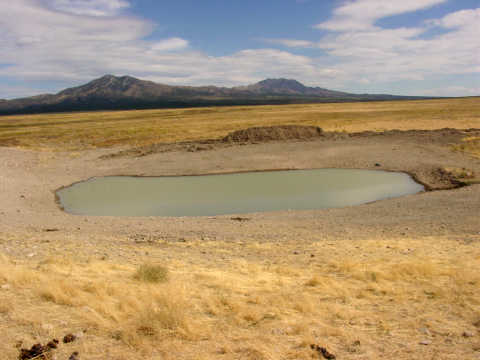 |
|
Several miles into the HMA, literally in the middle of nowhere, we dicovered this large holding pen system. There was only one section with the six foot high panels BLM requires for wild horse adoptees, so we assumed it is mostly used by cattlemen during times when they are allowed to bring in their herds to graze. |
 |
|
We noticed something interesting about the ant hills as we roamed about. The ants bring up soil from underground as they dig their underground colony. The material looked quite different form the surrounding surface soil....it was very granular, of a different texture. It looked like mined minerals. We believe that was indeed a mineral source for the horses because we noticed the horses would paw and eat this granular surface of ant hills We gathered some of the ant hill "dirt" and will have it analysed. We'll post the findings here. |
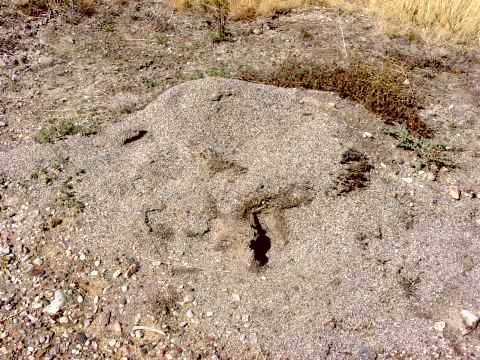 |
|
Prints were hard to come by in and we walked for miles to find some on established trails through the grasslands. This is an example of the terrain in bare areas of this grasslands other than the maintained gravel road for vehicle traffic. |
 |
|
Sage brush and sparse dry grasses ... this was the bulk of the vegetation in this area. |
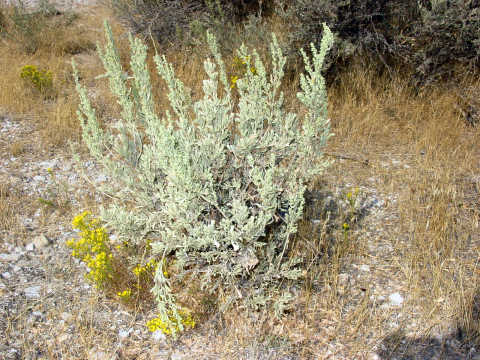 |
|
| The Horses of Onaqui |
||
Although difficult to see, in the center of this picture you will notice a long carvan of horses moving in single file. These horses are on the move, heading for the watering hole. This large herd is composed of several smaller bands. |
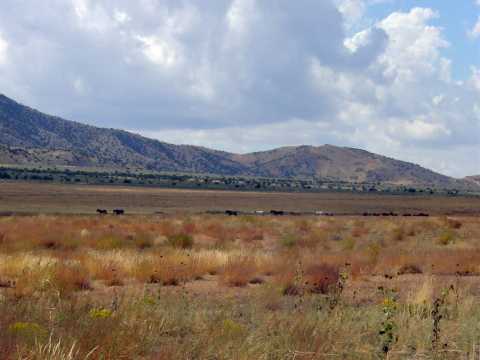 |
|
We were fascinated to notice that at some unheard signal known only to the horses, the separate bands would come together as a huge band when it was time to go to water, then they would all arrange in single file and move out. It seemed as if each band stallion would yield authority at these times to become one unified group that seemed to move with one mind. During the trek to water there were no squabbles among the horses, no noticable anxiety among the stallions as the mares and young of the various smaller bands all mingled together. |
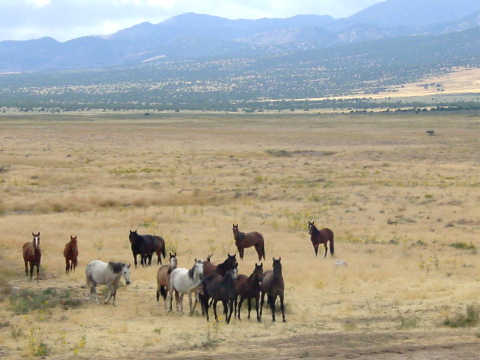 |
|
Drinking commenced in an orderly fashion and seemed to be by rank with the lower ranked horses waiting in line for their turn. |
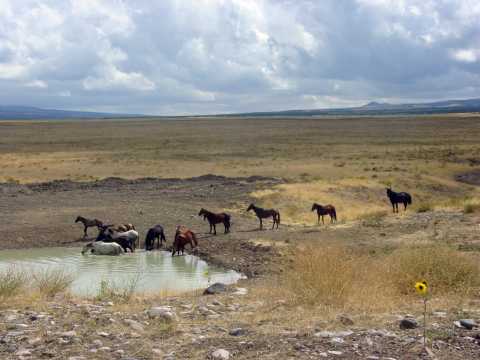 |
|
After everyone drank and the group moved out, they would then break apart into their separate bands and THEN the stallions would reassert themselvs and some minor scuffles ensued. |
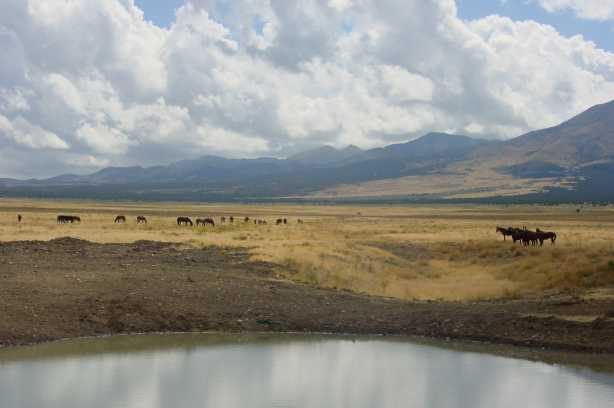 |
|
| This
small band was very
skittish and impossible to get close to...to take this shot I had to
lay in the grass and hold the camera up...hoping to get a shot. Steve
was circling wide in hopes of driving them toward me for a better shot,
but they were far too wise to fall for that. This was the best shot I
could get of them....I didn't do very well! There were many types of bands ranging from one stallion with one mare, to bands of around 15 horses with two or three stallions - one senior stallion and one or two younger. |
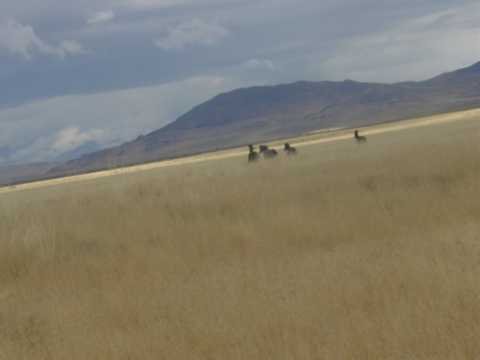 |
|
| This handsome fellow we called
"Hubba, Hubba, Big Man" - a good hand taller than the rest of his band
members and massively built, just short of being "drafty." |
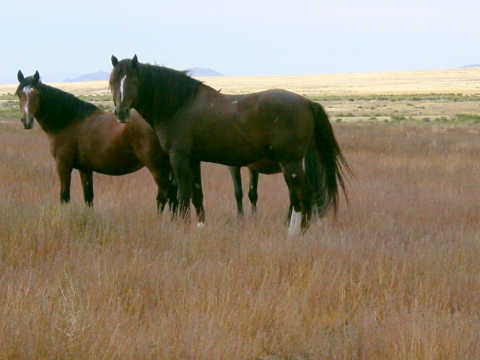 |
|
| Clearly these horses are fit and
healthy. They seem able to find everything they need to thrive in this
environment. |
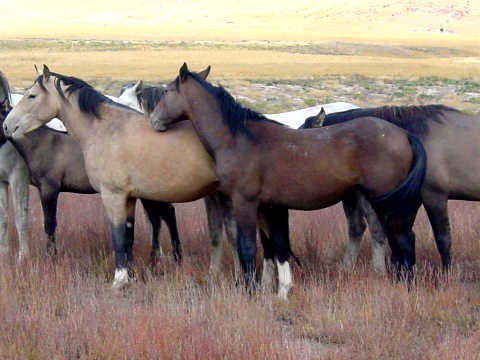 |
|
| Hoof Images grabbed from video Bear in mind that
these horses spend most of their time in the grasslands. They do cross
the gravel road a couple of times each day going to water and there is
gravel around the water hole. There are some scattered rocks out in the
grasslands along some of the paths they follow, but nothing even close
to the rocky terrain the High Desert horses move on. The hooves
of these horses (shape and wall length) seem to fall somewhere in
between those of island horses and high desert horses, which makes
sense in that the terrain is less rugged than the high desert and more
rugged than the island.
|
||
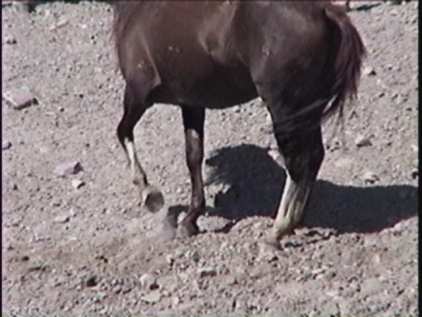 |
||
| A
stallion scuffle caught on film. Note the beautifully defined muscles
in the strong back of the grey stallion. |
||
| At The BLM Holding facility |
||
This is the entrance to the BLM holding facility, just a few miles from the HMA as the crow flies, but a bit of a drive winding through the hills. |
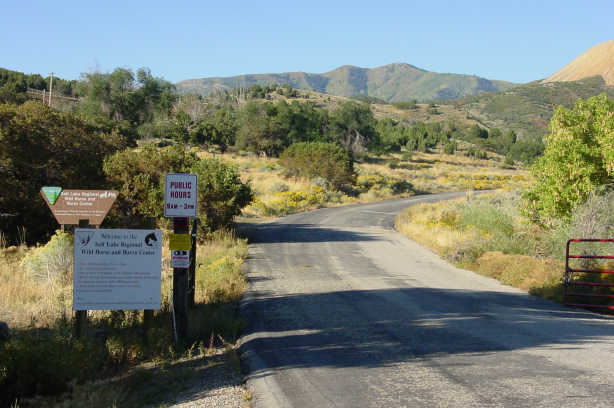 |
|
We were greeted warmly by the B:M manager who first showed us the mechanized restraint chute they use with the horses. He made a point ot explain to us that the chute is desigend to assure the horses came to no harm while being handled, or vetted. You can see that there are various access ports to allow handlers to make contact with the animal inside. |
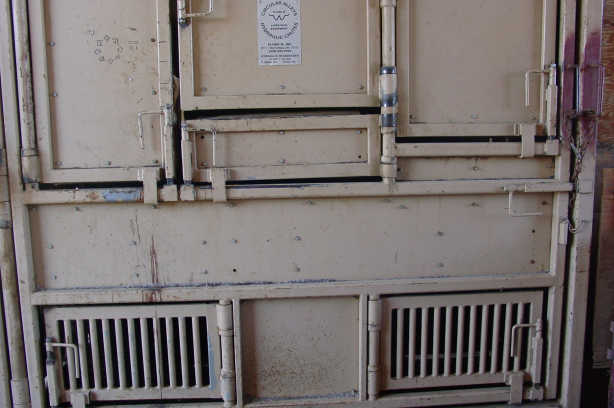 |
|
Once the animal is inside, the chute rotates with the horse inside (the chute is empty in this picture) |
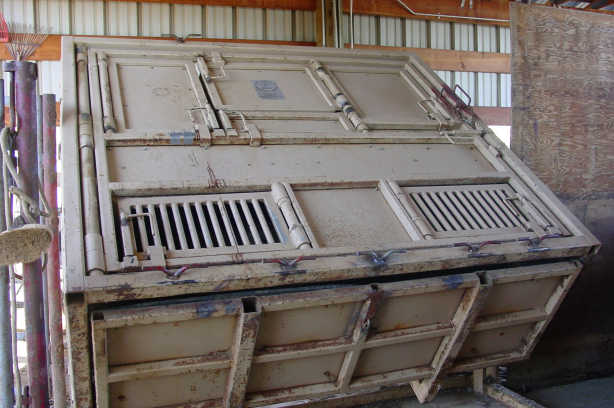 |
|
Once the chute is fully horizontal, the bottom opens to allow access to the feet for trimming, or treatment. You can see the inner panel that applies pressure to the entre animal inside. Inside the space was heavily padded to minimize risk of injury to the horse. I had to wonder, though, about the mental state of a wild horse inside. |
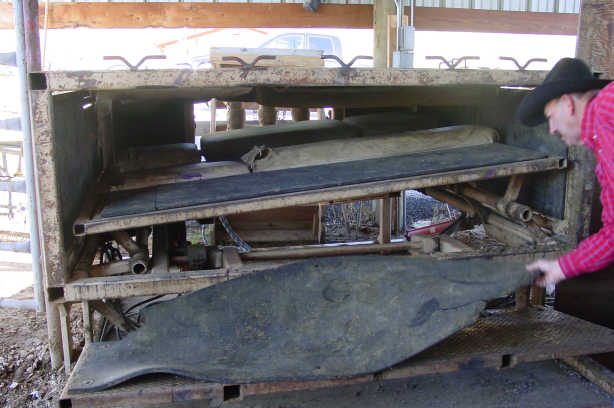 |
|
What was far more disturbing to me than the chute, were the huge bales of very rich, free choice alfalfa hay these horses are fed from the moment they entered the facility. The BLM manager became a little tense when I asked him about it, it was clear I was not the first to question the logic. He said that these horses NEEDED the alfalfa because of the stress they are under when captured, and its a FACT that alfalfa provides the nutrition they need to deal with stress. (I capitalized the words he stressed to make his point with me), it was clear that he expected me to argue with him. But I had no intention of doing so...what would be the point? |
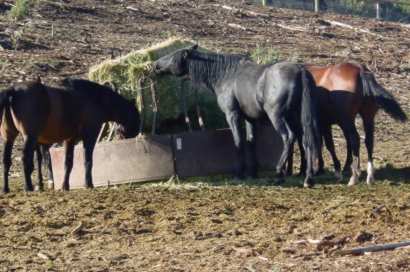 |
|
These horses in the next three pictures were very foot sore. |
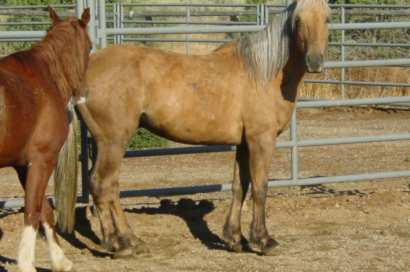 |
|
Shifting weight from foot to foot |
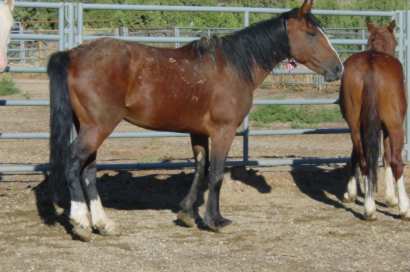 |
|
Shifting weight to the hinds. All the horses in this pen appeared to be laminitic, or had been trimmed too short. The BLM manager told us that they had just a few days before been trimmed while in the tilt chute. |
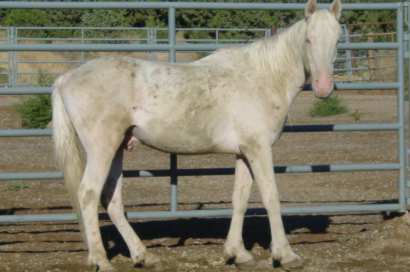 |
|
We can not infer much regarding their feet as being representative of how they look in the wild because these horses have been in this facility for at least a month and have had a drastic and sudden change to their diets. The feet were coated in and packed with manure...just like many domestic horses....which made it impossible to get a look at the volar surface of the feet of these horses. Many of these horses have been trimmed by BLM personnel at least once. |
||
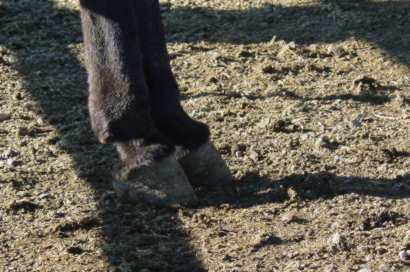 |
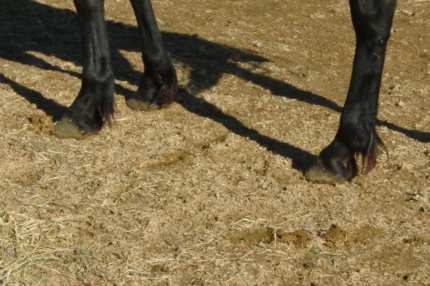 |
|
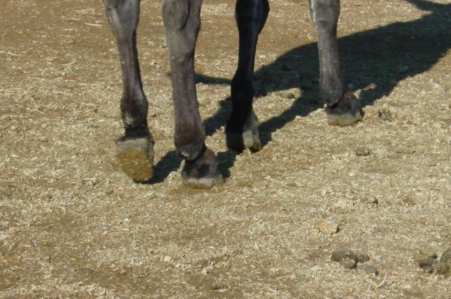 |
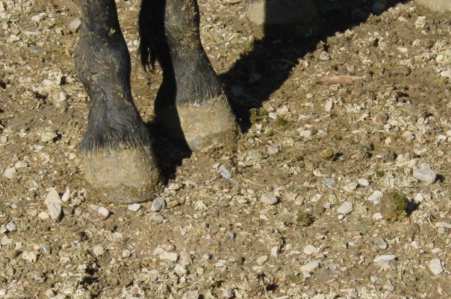 |
|
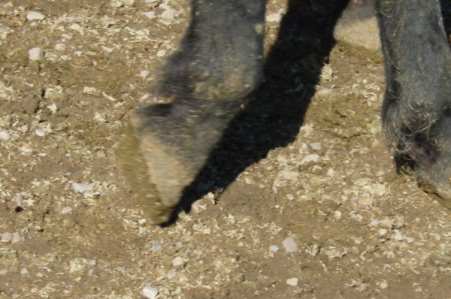 |
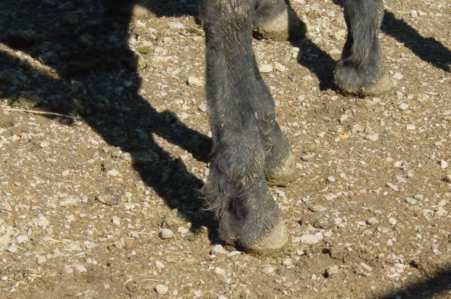 |
|
Of all the paddocks at this facility, only one had any trees. The rest of the paddocks were bare. |
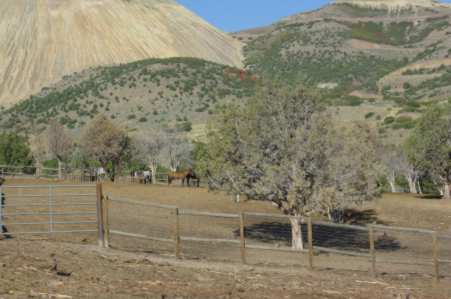 |
|
Well there is a start folks.
As with the other pages, I'll add more as I have time to filter through
the volumes of pictures
and video from this trip.
Enjoy!
|
||